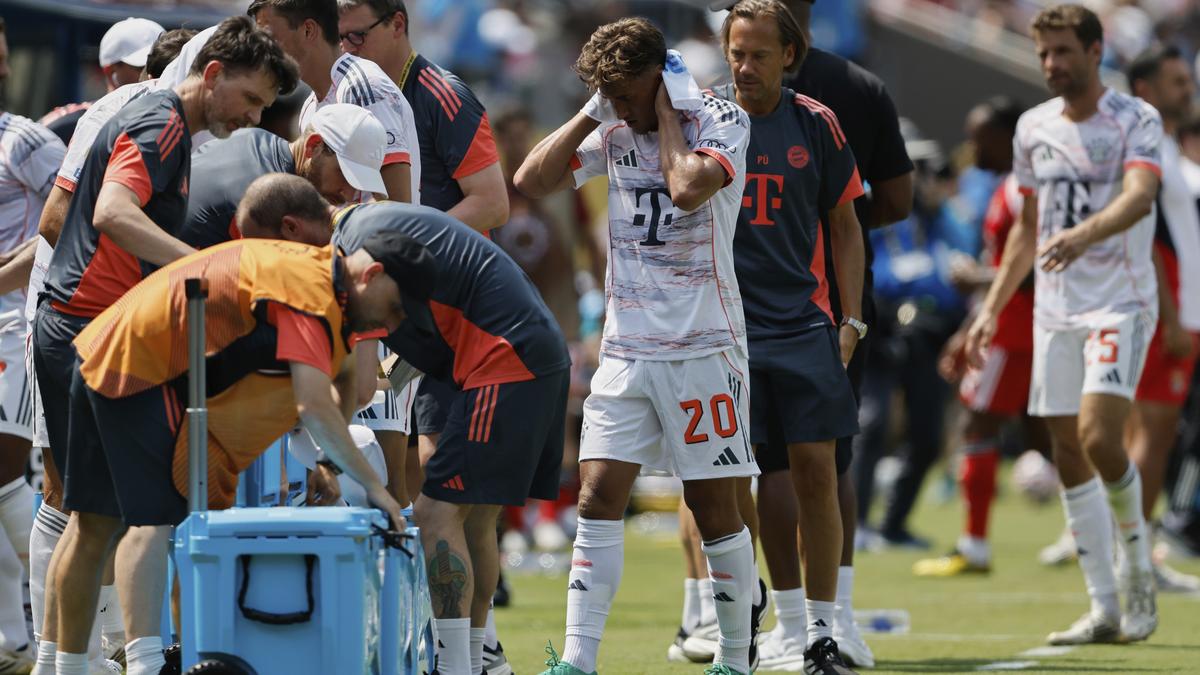Scorching Club World Cup raises concerns for World Cup 2026

Soaring temperatures at this year’s FIFA Club World Cup 2025 have raised concerns over afternoon kick off times at the 2026 World Cup, as the expanded tournament poses logistical challenges for organisers.
A heatwave across the United States saw Borussia Dortmund players face South Korea’s Ulsan in Cincinnati on Wednesday, with temperatures exceeding 90 degrees Fahrenheit (32.2°C) with the kick off at 3 p.m. local time.
Players took advantage of FIFA’s once-per-half cooling breaks at games this week while Chelsea manager Enzo Maresca told reporters it was “impossible” to organise regular training sessions in the afternoons in sweltering Philadelphia.
Global players’ union FIFPro said the conditions should “serve as a wake-up call”.
“As climate change is making extreme weather conditions, including dangerous heat, an increasingly urgent issue for everyone in the football industry, the risk posed by kickoffs in very high temperatures is real and growing,” a FIFPro spokesperson told Reuters.
ALSO READ | Will Kylian Mbappe play in Real Madrid vs Red Bull Salzburg at FIFA Club World Cup?
FIFPro urged global soccer bodies to re-evaluate kickoff times to better address heat conditions, while praising organisers like FIFA for their flexibility in adding cooling breaks to games.
“We believe there is still a lot more that should be done to prioritise player health and safety,” said FIFPro.
“Current protocols and laws of the game require urgent revision – this is a challenge the entire football industry must take on together.”
FIFA did not immediately respond to a request for comment.
Match times for the 2026 World Cup, co-hosted by the United States, Mexico, and Canada, have yet to be announced, but organisers may face challenges if sweltering conditions return.
Heat issues would come as no surprise to those who were at the tournament in 1994, the last time the United States played host.
“The cacophony of complaints echoing across the land could drown out the cheers at the nine stadiums where they are showcasing international soccer’s quadrennial event,” the Los Angeles Times wrote a week into that tournament, as high temperatures had fans steaming.
More than 90,000 fans piled in to watch the final in Pasadena, where temperatures reached 100 degrees Fahrenheit (37.8°C). It was the last time that a World Cup final was played entirely in daylight.
IT’S COMPLICATED
With the tournament expanding from 32 to 48 teams, afternoon kick offs may be unavoidable to meet scheduling demands and accommodate lucrative European broadcast markets.
“The big broadcasters are investing a ton of money, so they’re not super interested in having the schedule changed to accommodate heat if it means that they’re not going to make as much ad revenue,” said Madeleine Orr, an author and sports ecologist.
Host cities at the highest heat risk in 2026 – including Miami, Monterrey, Philadelphia, Kansas City, Boston and New York – should avoid kickoff times in the hottest afternoon hours, Orr said in a study she co-authored earlier this year.
Orr said pushing more afternoon games to one of the tournament’s four indoor venues in Atlanta, Dallas, Houston and Vancouver could be part of the solution.
“You need your broadcasters to be happy,” said Orr.
“If we’re talking about safety first, it’s not complicated at all. If we’re talking about hosting a major event and making it financially feasible and seeing this event happen at all, it’s complicated.”






